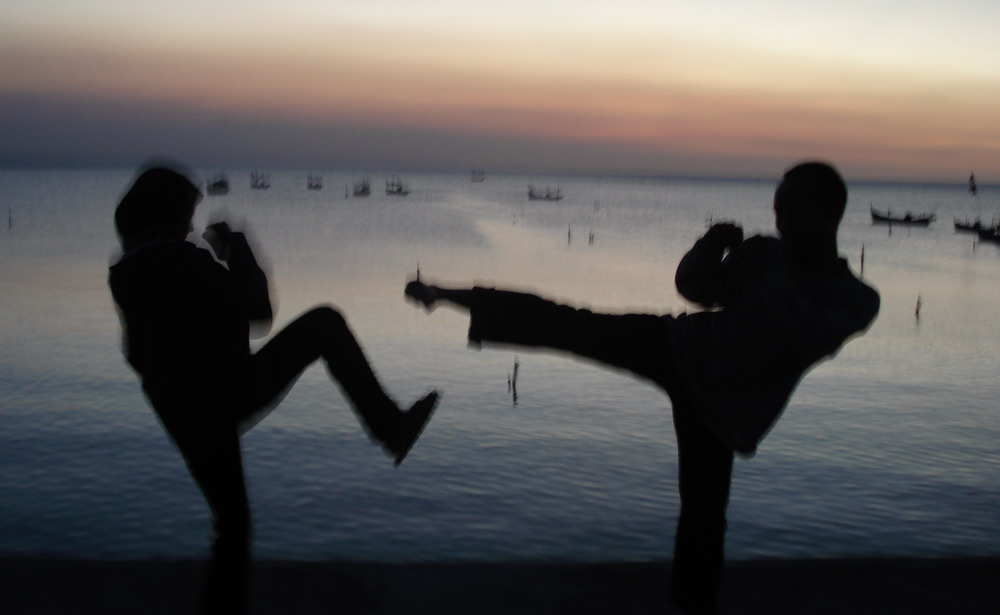 |
| Female Gouramy |
Fish has long been grown commercially so in some areas already established regional aquaculture development. Regional aquaculture development areas include: West Java (Bogor, Tasikmalaya, Ciamis, Garut), Central Java (Cilacap, Banyumas, Banjarnegara, Purbalingga), Yogyakarta (Kulonprogo, Bantul, Sleman), East Java (Tulungagung Blitar, Lumajang), West Sumatra and Riau.
Along with the development of the cultivation of carp were more widespread, the need for stem and seeds also increased. To meet the increasing need of seed supplies in sufficient quantities and good quality. On the other hand, traditional nursery techniques can only produce survival rates of about 75% the size of the larvae. so that necessary to repair carp hatchery techniques that continuity of production and quality can be met.
 |
| Male Gouramy |
Characteristic of the most striking differences between the male parent to the female parent is a bump on the head (forehead), thick lower lip and blush when lust and do not have the color black in the armpits and pectoral fins when massaged into the abdomen to remove fluid toward genital colored sperm white. While the female fish have the opposite characteristics.
The males, which are ready to be parents have characteristics: standard length 30-35 cm, aged 24-30 months and weighing 1.5 to 2 kg. While the female parent has the characteristics: standard length 30-35 cm, aged 30-36 months and weighing 2 to 2.5 kg. Should be used in the spawning parent already weighed approximately 3 kg (females) and 4-5 kg (males).
Parent can be maintained on the pool wall / ground either in mass or
paired with a ratio of male: female = 1: 4. Feed given
floating pellet (protein content> 28%) 2% biomass / day and leaves sente / taro 5% of the weight of biomass / day.
Spawning
Spawning done naturally in the parent pool maintenance. Swimming parent given a place and nest material. Place the nest in the form of a plastic wastebasket 20-25 cm diameter spherical or other similar place and placed at a depth of 10-15 cm below the surface of the water. Ingredients such as coconut fiber nest, fibers or other materials that can be made nest is placed on the surface of the water around the nest. The fish that are ready to spawn make nests to hold the eggs.
Checking eggs done every morning at each nest that was made parent fish by piercing the nest or the swing. When leaving the eggs or oil the hatchery has already occurred and a nest containing eggs.
nest to be moved slowly into a plastic basin filled with water mains. Slowly open the nest until the eggs out and float on the water surface. The eggs were taken by using a spoon to transfer to the hatching container of glass fiber in the form of a funnel or aquarium that was filled with water.
Hatching eggs LARVA AND MAINTENANCE
The density of eggs during the hatching process is 4-5 egg/cm2 by giving small aeration. The eggs hatch in 24-48 hours depending on the time lapse medium temperature
hatching. Temperature should be maintained in the range 29-30 ° C to increase the degree of hatching eggs.
Larvae can be transferred to a larger container after the age of 7-9 days for subsequent maintenance. Larvae begin feeding after transfer.
The feed is in the form of hair worms (Tubifex sp.), Daphnia sp., Moina sp., Or other natural feed appropriate size.
 |
| Gouramy Spawning Pond |
Maintenance of seed
Carp seed can be maintained in an aquarium, plastic coated wooden tubs, tub wall or directly to the pond stocked nursery. Maintenance of seed in the container must be equipped with a controlled aeration to supply oxygen and to avoid direct contact with rain.
Feed early form of hair worms, Daphnia sp., Moina sp., Or other sources of animal protein. Vegetable Ingredients can be started after the age of larvae 36-40 days. While artificial feed (pellets) can be given after the age of 80 days. Pellet size adjusted to the fish's mouth opening.
Older maintenance and seeds produced include: 40-day-old seed can reach the size of 1-2 cm (the equivalent size of a fingernail). Seeds from 80 days to reach the size of 2-4 cm (the equivalent size of a thumb). Seeds from 120 days to reach the size of 4-6 cm (the equivalent size of a razor blade). And 160 days old seedlings can reach the size of 6-8 cm (the equivalent size of a match in the community).
AIR QUALITY MANAGEMENT & DISEASE
In carp seed required maintenance of water quality is relatively stable, especially the temperature is 28-29 C. Fluctuations in temperatures that are too high can lead to impaired fish health condition and susceptible to disease. Indications are seen include decreased appetite, fish and gather on the surface of the tail is black. Disease organisms are usually detected are: Trichodina sp., Ichthyopthirius sp., Aeromonas sp., Etc..
Treatment of fish disease organisms have adapted to the cause. Some of the materials that can be used in the treatment of carp seed by soaking for 24 hours include: salt (1000 ppm) or formalin (25 ppm).
Aquaculture Fisheries Development









3 komentar:
Quality content is the key to be a focus for the visitors to visit
the site, that's what this website is providing.
Also visit my site - el-equipo.net
I am really impressed along with your writing skills as well as with the structure on your weblog.
Is that this a paid topic or did you modify it yourself? Anyway stay up the nice high quality writing, it is rare to see a great blog like this one nowadays.
.
Also visit my web site; 81204
to 81024 :I wrote a few articles myself, but there are some articles are the result of the translation journal articles fisheries in my state
Post a Comment